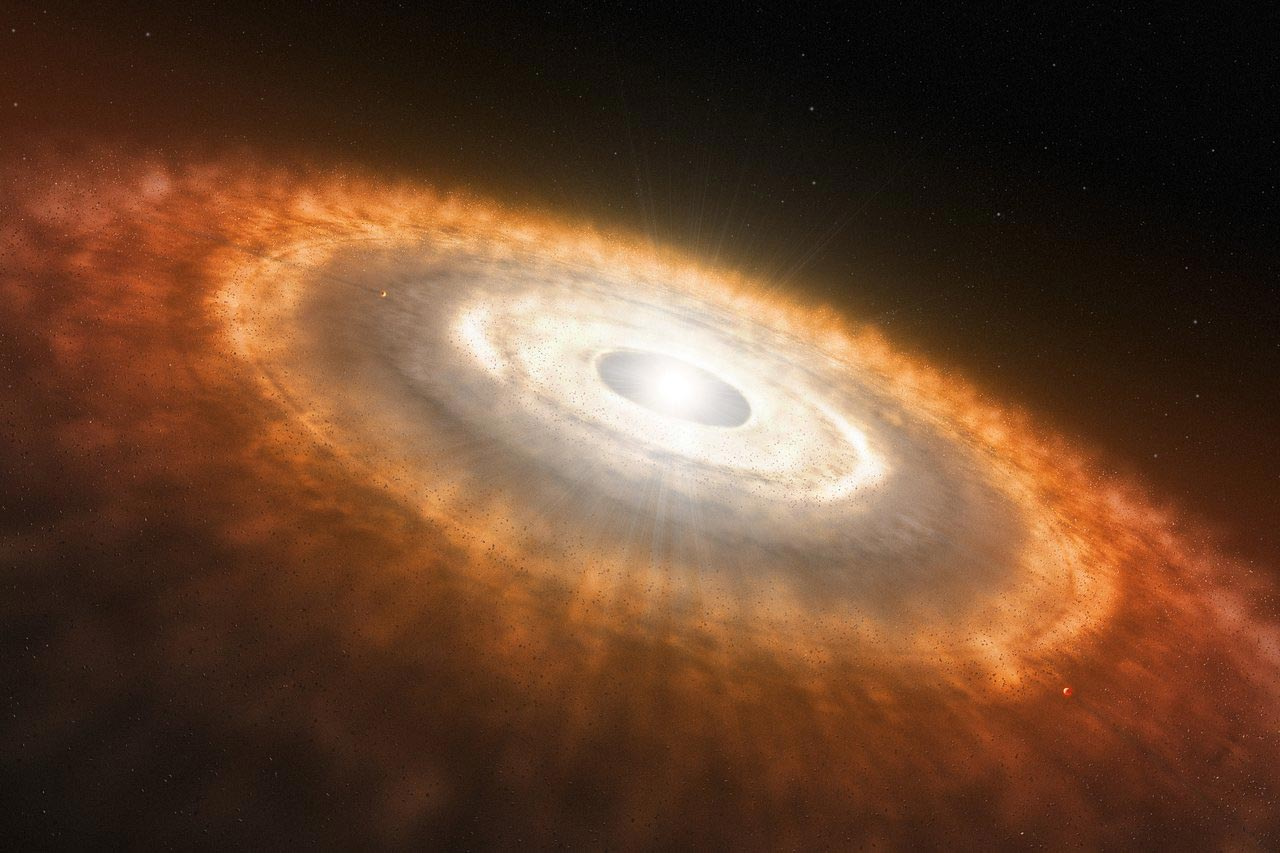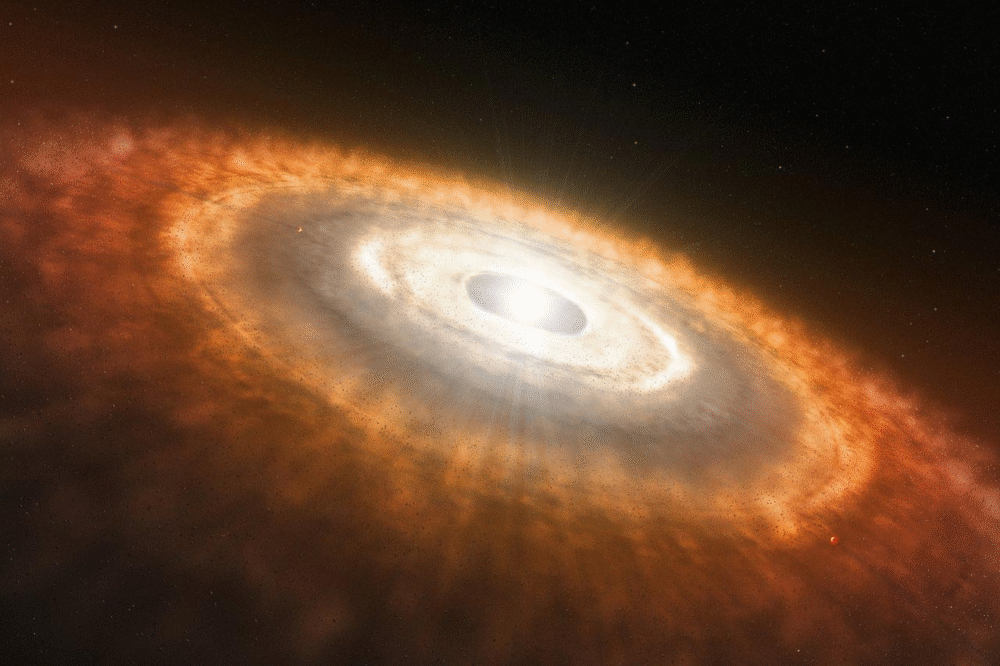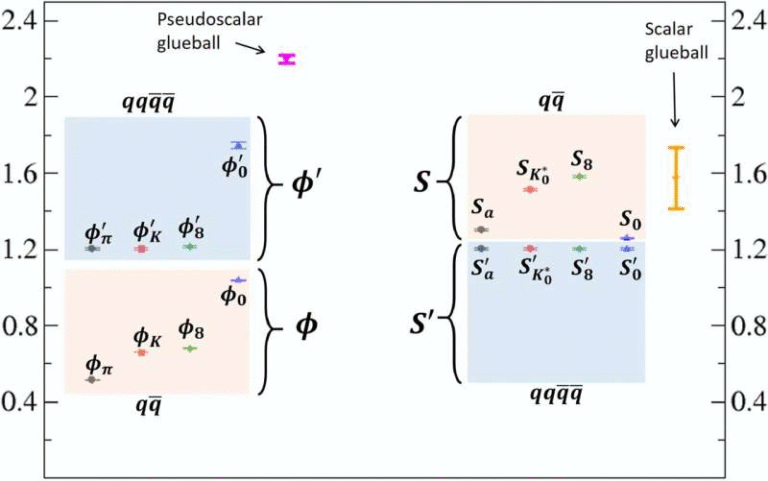Life on Earth Might Be Thanks to a Planetary Collision

A new study has shed light on how Earth became the only known planet capable of supporting life. Researchers from the University of Bern, working with isotope data and advanced modeling, suggest that early Earth was actually dry and barren, missing the essential volatile ingredients required for life, such as water, carbon compounds, and sulfur. According to their findings, it was only after a giant collision with another planetary body, Theia, that Earth gained these critical elements, creating the conditions for life to eventually flourish.
How Earth Formed in the First Place
The Solar System formed around 4.568 billion years ago from a rotating disk of gas and dust surrounding the young Sun. Within just a few million years, small particles clumped together to form planetesimals, which then grew into larger protoplanets. One of these was the proto-Earth.

Researchers discovered that Earth’s chemical composition—the unique mix of elements that define its makeup—was already fixed within about 3 million years of the Solar System’s birth. That’s remarkably fast on a cosmic timescale. This conclusion was reached by studying isotope ratios, particularly the decay of manganese-53 (53Mn) into chromium-53 (53Cr). Since 53Mn has a half-life of 3.8 million years, it acts like a high-precision clock that allows scientists to measure events that happened over 4.5 billion years ago with surprising accuracy.
What they found was that Earth’s original reservoir of elements formed quickly but lacked the volatile materials necessary for life. This means that while Earth was structurally complete, it was essentially a dry rock orbiting the Sun.
Why Early Earth Was Missing Key Ingredients
The problem comes down to temperature. In the early Solar System, the inner region—where Mercury, Venus, Earth, and Mars formed—was far too hot for volatile compounds to survive in solid form. Elements like hydrogen, carbon, nitrogen, and sulfur existed mostly as gases, meaning they weren’t incorporated into the rocky material that built these planets.
Meanwhile, farther from the Sun, in cooler regions beyond what’s called the snow line, icy bodies could accumulate and hold on to volatile-rich materials. That’s why planets like Jupiter and Saturn, as well as many comets, are loaded with water and other volatiles, while inner planets started off dry.
This left proto-Earth in a chemically incomplete state—able to exist as a planet, but not capable of supporting life.
Enter Theia: The Cosmic Delivery Service
The missing puzzle piece seems to have arrived in the form of Theia, a Mars-sized planetary body thought to have existed in the early Solar System. According to the widely discussed giant impact hypothesis, Theia collided with Earth in a catastrophic event.
This collision not only resulted in the formation of the Moon, but, as the new study suggests, it also delivered volatile-rich material from farther out in the Solar System. Theia likely formed in a cooler region where water, carbon, and other volatile elements could accumulate. When it smashed into Earth, some of that material merged with our planet, seeding it with the ingredients required for life.
Without this collision, Earth might have remained a dry, lifeless rock, much like Mercury or the Moon. The study highlights that life on Earth may owe its existence to a chance cosmic accident.
What the Study Shows
The research team, led by Pascal Kruttasch and Klaus Mezger, combined isotope data from meteorites and terrestrial rocks with advanced computer models. This approach allowed them to reconstruct the chemical timeline of proto-Earth with high accuracy.
Their conclusion: the proto-Earth’s chemical identity was locked in within about 3 million years, and it was lacking volatiles. Only a later major collision could explain how Earth eventually became enriched in life-supporting elements.
This means that Earth’s habitability wasn’t inevitable. Instead, it likely depended on a rare and random cosmic event.
Why This Matters for Understanding Habitability
This finding carries important implications not just for Earth’s history but also for the search for life elsewhere in the universe. It suggests that being in the so-called habitable zone—the region around a star where liquid water could exist—is not enough. A planet also needs the right chemical composition, which may require lucky events like giant impacts to deliver missing ingredients.
So, while astronomers have discovered thousands of exoplanets, the odds of them having the same volatile-rich chemistry as Earth might be lower than we think. Habitability, in other words, could be much rarer and more dependent on chance.
What We Still Don’t Know
The collision with Theia is still not fully understood. While models show how it could have formed the Moon and supplied Earth with volatiles, there are unresolved questions:
- How much material did Theia actually deliver? Was it enough to account for all of Earth’s water and organics, or did smaller bodies later add more?
- What about isotopic similarities? Earth and the Moon share strikingly similar isotopic ratios, which is difficult to explain if Theia came from farther out in the Solar System.
- Was Theia the only source? Some scientists argue that later “late veneer” accretion of comets or asteroids may have also contributed to Earth’s volatile budget.
The researchers emphasize that more advanced models are needed to fully explain both the physical and chemical outcomes of the Theia collision.
Extra Knowledge: The Role of Volatile Elements
To understand why this discovery is significant, it helps to know what volatile elements actually do:
- Water (H₂O): Essential for biochemical reactions, solvent for life, regulates climate.
- Carbon compounds: Basis of organic chemistry, building blocks of DNA, proteins, and fats.
- Sulfur: Plays roles in amino acids and metabolic processes.
- Nitrogen: Needed for nucleic acids and proteins.
Without these, Earth would not have the chemical complexity required for life to emerge.
Extra Knowledge: The Giant Impact Hypothesis
The giant impact hypothesis is not new. It has been the leading explanation for the formation of the Moon since the 1970s. According to this idea:
- Around 4.5 billion years ago, proto-Earth collided with Theia.
- The debris from the collision eventually coalesced into the Moon.
- Some of Theia’s material mixed into Earth, altering its chemical makeup.
The new study strengthens this hypothesis by showing that Earth must have received its volatiles after its initial formation, supporting the idea that Theia was responsible.
Extra Knowledge: Why Earth Is Unique Compared to Its Neighbors
Looking at nearby planets highlights just how unusual Earth is:
- Mercury: Extremely dry, with almost no atmosphere.
- Venus: Thick carbon dioxide atmosphere, but runaway greenhouse effect makes it hostile to life.
- Mars: Evidence suggests it once had water, but most has been lost due to its thin atmosphere.
Among these, only Earth has the right balance of liquid water, carbon-based chemistry, and a stable atmosphere, thanks in part to that fateful collision billions of years ago.
Bigger Picture: Life in the Universe
The study reminds us that life on Earth may not be the result of a smooth, predictable process, but rather a lucky break in cosmic history. If that’s true, the conditions for life elsewhere could be much rarer than we hope.
It also highlights the importance of studying planetary formation in detail. The more we understand about how planets form and evolve, the better we can estimate where life might exist beyond Earth.
Conclusion
The new research makes a strong case that Earth’s habitability was not guaranteed. The planet formed quickly, but in a volatile-poor state that couldn’t support life. Only a later collision with Theia, a water-rich planetary body, likely provided the elements necessary for Earth to become a life-friendly world.
In other words, if not for one giant cosmic accident, we might not be here today.
Research Paper: Time of proto-Earth reservoir formation and volatile element depletion from 53Mn-53Cr chronometry





